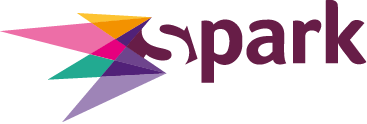Here’s something I’ve noticed lately: Some companies still approach yearly planning and budgeting with a static mindset.
They set a fixed target for revenue, a fixed budget for the year, and identify all of the relevant fixed costs. All of those numbers are then frozen in time, only to be thawed and reviewed when they’re measured against actual business performance. Good or bad, another set of fixed numbers are devised, and the whole thing happens again.
But if I’ve learned anything in my career, it’s that nothing stays “fixed” for very long. That’s why, in this short post, I encourage you to develop your approach to forecasting and keep things fluid with a rolling forecast.
A fixed budget is always useful, to track targets set at the start of a year and then measure against actual results. But as things develop during the year its use becomes outdated and your forecast should start to reflect the reality of the situation you are dealing with.
What exactly is a rolling forecast?
Essentially, a rolling forecast is geared towards on-going planning.
If you’re forecasting for 12 months, you need to be updating the forecast each month or quarter to reflect current circumstances. This way, your forecast is always up to date as it reflects new costs or income, or any unexpected delays or increases in cash flow.
This allows you to be more responsive to a fast-paced, ever-changing environment. As challenges and opportunities unfold throughout the year, you can quickly update your forecast and plan accordingly.
Why is this better than a fixed budget?
A rolling forecast exists as a living document. This means you’re always looking ahead, making adjustments as you go, instead of basing decisions on a fixed number that you came up with weeks or months ago.
Creating a rolling forecast also helps with ongoing scenario planning. As you collect up-to-date, accurate financial data, you can explore different (hypothetical) situations and begin to form your response.
For instance, what would you do if your revenue dropped by 15%? If you’re working to a fixed budget, you might panic. But with a rolling forecast, you have the tools to predict profitability and cash flow, so should the worst happen, you’ll be ready.
How do you create a rolling forecast?
As with any forecast, preparation is key.
You need to identify your goals, the time frame you’re forecasting, and the data sources you’ll be using. Close attention should also be paid to the numbers that matter — or what I like to call the “value drivers.”
These are the figures that directly contribute to the success of a business, and they often vary from one company to the next. You can find your value drivers by looking at past performance.
For example, when your company last had what you would consider a successful year, what did staff costs as a percentage of revenue look like? Armed with your answer, you can set this as a benchmark and continually measure against it, updating your forecast in line with business performance, changes, and trends.
In summary
Now, more than at any other point in my career, markets and industries are evolving fast.
By using a rolling forecast, your company can adapt quickly to these rapidly changing circumstances. You won’t be left wondering what happened after the fact; rather, you’ll be reacting to things as they happen.
What’s more, the increased accuracy provided by a rolling forecast can help you make truly informed decisions. Whether it’s recruiting staff, raising finance, pursuing bigger projects, or cutting costs, you’re making the call based on real-time data and updated projections — and not on a six-month-old fixed number that won’t be reviewed for another six months.
Need some help creating a rolling forecast? Book your 15-minute discovery session with Spark today.



